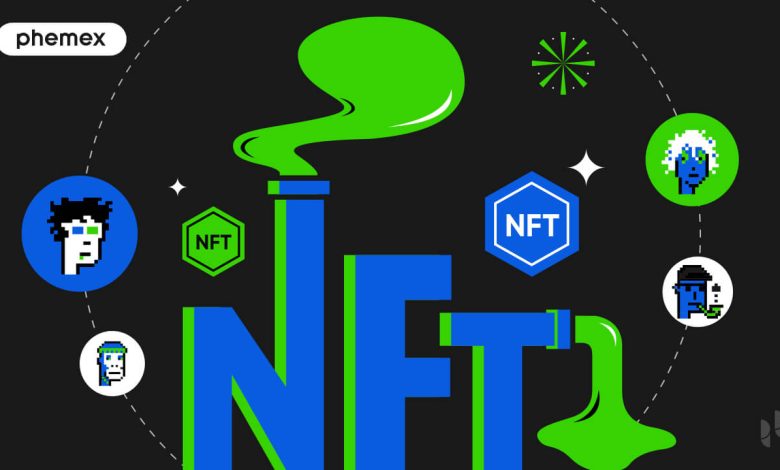Environmental Concerns Surrounding NFTs

- Understanding the environmental impact of NFTs
- The carbon footprint of NFTs: a closer look
- Exploring the energy consumption of NFTs
- Can blockchain technology be sustainable for NFTs?
- Addressing the criticisms of NFTs on the environment
- Potential solutions to reduce the environmental impact of NFTs
Understanding the environmental impact of NFTs
When it comes to understanding the environmental impact of NFTs, it is crucial to consider the energy consumption associated with blockchain technology. NFTs are created and traded using cryptocurrencies such as Ethereum, which rely on proof-of-work consensus mechanisms that require significant amounts of computational power to validate transactions.
This energy-intensive process has led to concerns about the carbon footprint of NFTs and their potential contribution to climate change. As the popularity of NFTs continues to grow, so does their environmental impact.
It is important for artists, collectors, and platforms to consider the environmental implications of participating in the NFT market. Exploring sustainable alternatives and practices can help mitigate the negative effects of NFT transactions on the planet.
The carbon footprint of NFTs: a closer look
The carbon footprint of NFTs has become a topic of concern in recent years as the popularity of these digital assets continues to grow. NFTs are unique digital tokens that are stored on a blockchain, which is a decentralized and secure digital ledger. However, the process of creating and trading NFTs has raised questions about their environmental impact.
One of the main issues surrounding the carbon footprint of NFTs is the energy consumption required to mint and trade them. The process of minting an NFT involves complex cryptographic calculations that require a significant amount of computational power. This power consumption has led to criticism of NFTs for their contribution to carbon emissions and climate change.
Another factor contributing to the carbon footprint of NFTs is the blockchain technology on which they are built. Blockchain networks, such as Ethereum, which is commonly used for NFTs, rely on a consensus mechanism called proof of work. This mechanism requires miners to solve complex mathematical puzzles to validate transactions, which again consumes a large amount of energy.
While some argue that the environmental impact of NFTs is justified by their potential to revolutionize the art and collectibles market, others are calling for more sustainable alternatives. One possible solution is the development of eco-friendly blockchains that use less energy-intensive consensus mechanisms, such as proof of stake.
Exploring the energy consumption of NFTs
When it comes to exploring the **energy consumption** of NFTs, it is crucial to consider the environmental impact of these digital assets. NFTs have gained popularity in recent years, but their **energy usage** has raised concerns among environmentalists and **sustainability** advocates. The process of minting and trading NFTs requires a significant amount of **electricity**, leading to a high **carbon footprint**.
Can blockchain technology be sustainable for NFTs?
One of the main concerns surrounding NFTs is their environmental impact, particularly in relation to the sustainability of blockchain technology. Many critics argue that the energy consumption required for minting and trading NFTs is unsustainable in the long run. The process of minting an NFT involves complex cryptographic calculations that require a significant amount of computational power, leading to high energy consumption. This has raised questions about the carbon footprint of NFTs and whether blockchain technology can be sustainable in the context of digital art and collectibles.
Addressing the criticisms of NFTs on the environment
Addressing the criticisms of NFTs on the environment is crucial in the ongoing discussion surrounding the impact of digital assets on the planet. While it is true that the process of minting NFTs consumes a significant amount of energy, it is important to consider the broader context of the environmental footprint of various industries.
One way to mitigate the environmental impact of NFTs is by exploring alternative blockchain technologies that are more energy-efficient. By transitioning to proof-of-stake mechanisms instead of proof-of-work, NFT platforms can significantly reduce their carbon footprint.
Additionally, implementing carbon offset programs and investing in renewable energy sources can help offset the energy consumption associated with NFTs. By taking proactive measures to address these concerns, the NFT industry can work towards a more sustainable future.
Potential solutions to reduce the environmental impact of NFTs
There are several potential solutions that can be implemented to reduce the environmental impact of NFTs. One option is to **utilize** blockchain networks that are more energy-efficient, such as those that use proof-of-stake **consensus** mechanisms instead of proof-of-work. By **adopting** these more sustainable networks, the overall carbon footprint of NFT transactions can be significantly reduced.
Another solution is to **encourage** artists and creators to offset the carbon emissions generated by their NFTs by investing in renewable energy projects or purchasing carbon credits. This can help **mitigate** the environmental harm caused by the creation and **trading** of NFTs, making them a more sustainable **option** for digital ownership.
Additionally, **implementing** more transparent and verifiable **tracking** mechanisms for the energy consumption of NFTs can help raise awareness about their environmental impact. By providing users with **real-time** data on the carbon footprint of their transactions, they can make more informed decisions about their **participation** in the NFT market.




